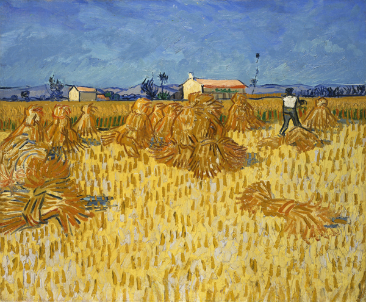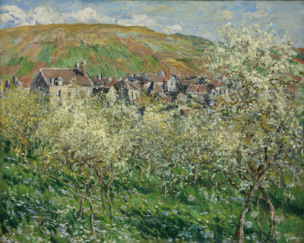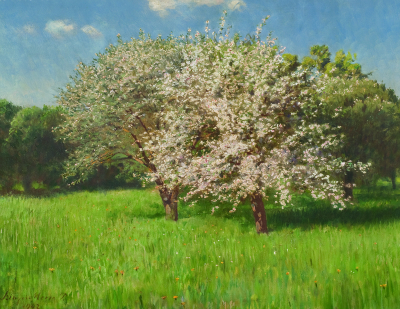The Lights Of Paris
In Budapest
Can be seen in the latest exhibition at the National Gallery; works made by the greatest stars of impressionism and post impressionism.
| Eszter Götz |
2013-08-14 08:14 |
Monet and Renoir, Cézanne, Degas, Gauguin and Van Gogh together; this could be a real delicacy of art history in any European city. They are not the main characters of this exhibition though. Neither are the works of Hungarian painters added to the show.
 |
 |
Van Gogh, Vincent: Harvest in Provance
1888 |
Claude Monet: Flowering Plum Trees
1879 |
In the practice of the last 2 decades it has been rather prevalent that the concept of the curator rules over the art works. In this case the curators managed to stay in the background while controlling and directing the attention of the visitors. Mariann Gergely és Edit Plesznivy managed to put the international material together with the Hungarian pieces (selected from the collections of the Israel Museum, the Museum of Fine Arts and the Hungarian National Museum) that they were not on contrast at all. The visitors are not given the chance to see masterpieces from abroad and a few Hungarian works of less significance; on the contrary the carefully selected works on both sides reflect on each other and strengthen the effect they have on the seer. A real parallel experience is provided thus, an experience that is prevalent in space also: on the right of the row of halls the French, in the opposite row the Hungarian works are arranged.
This exhibition covers not one or two eras but the evolving of a new painters’ viewpoint. This could be prevalent during the 1860s and 1870s in France and some 20 years later in Hungary. But the most important thing was their attitude towards their own social media that proved much stronger than their enthusiasm for the new artistic movements.
While studying in Vienna, Munich or Paris, they all experienced what the discovery of light or the catching of the magic of the moment can bring about, they created their own Hungarian way of impressionism based on their own Hungarian background. Though they did not reach such results as Monet with his impression of the rising sun still, they broke through the restrictions of academic art in a more resistant environment than their French contemporaries had to cope with.
 |
| Szinyei Merse Pál: Apple Trees, Szécsény |
The curators created a very harmonic balance between the 2 sides of the exhibition. The visitors are not drawn to „Tahiti” by Gauguin or the harbors of Paul Signac only; their attention is captured by the Hungarian works also. It is the visitor who makes the link between the masterpieces of French painters and those of the Hungarian artists. Thus the superstars of impressionism do not elevate the Hungarian painters to their level, but present the first breaths of the new artistic movement of the 19th century together with the works of Vaszary, Ferenczy István Csók Adolf Fényes or Pál Szinyei Merse.
MONET, GAUGUIN, SZINYEI MERSE, RIPPL-RÓNAI
Impressionist and Post-Impressionist Masterworks from the Collections of the Israel Museum, Jerusalem, the Hungarian National Gallery and the Museum of Fine Arts, Budapest, June 28 - October 13.